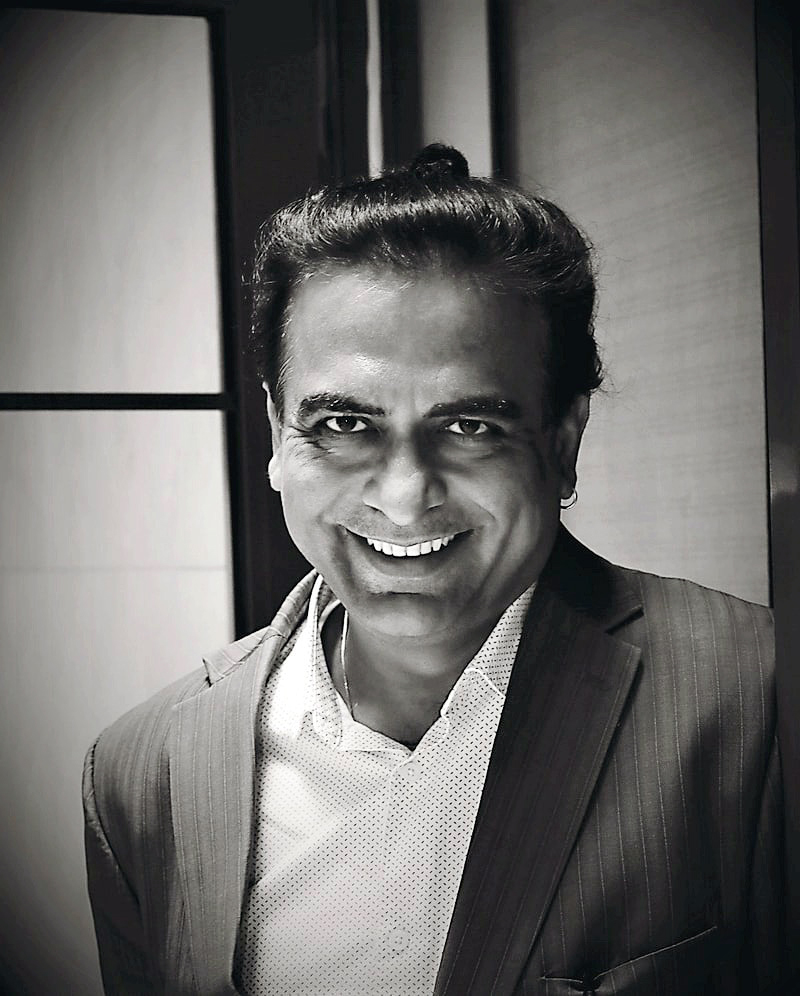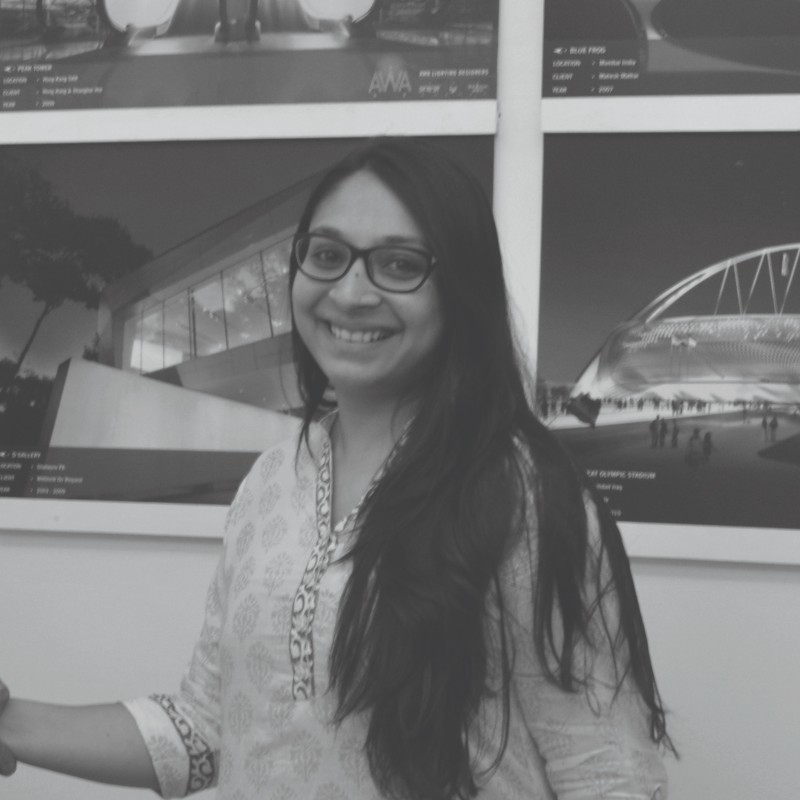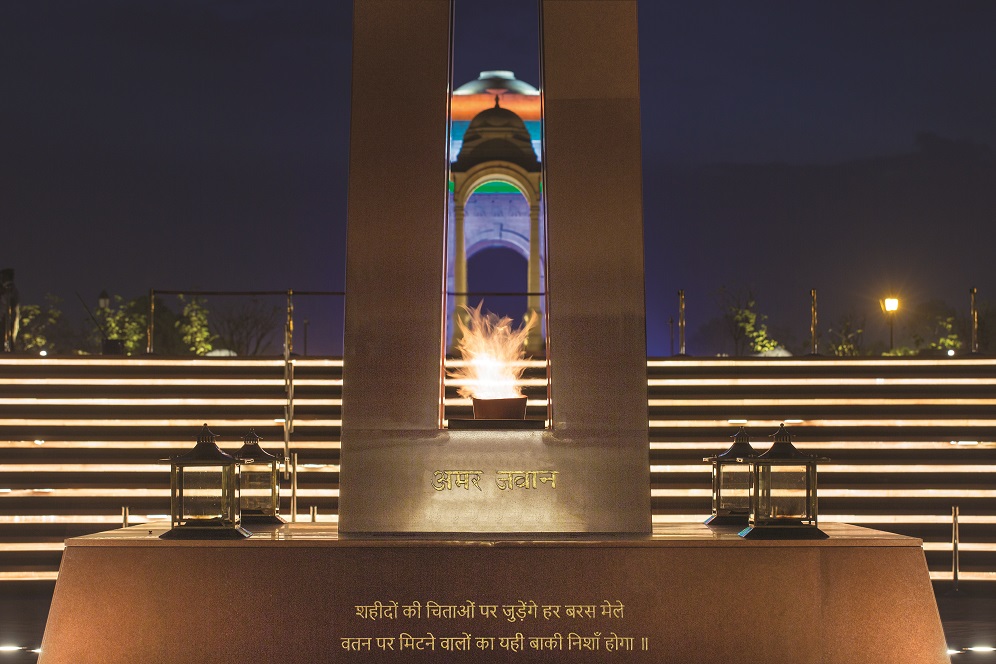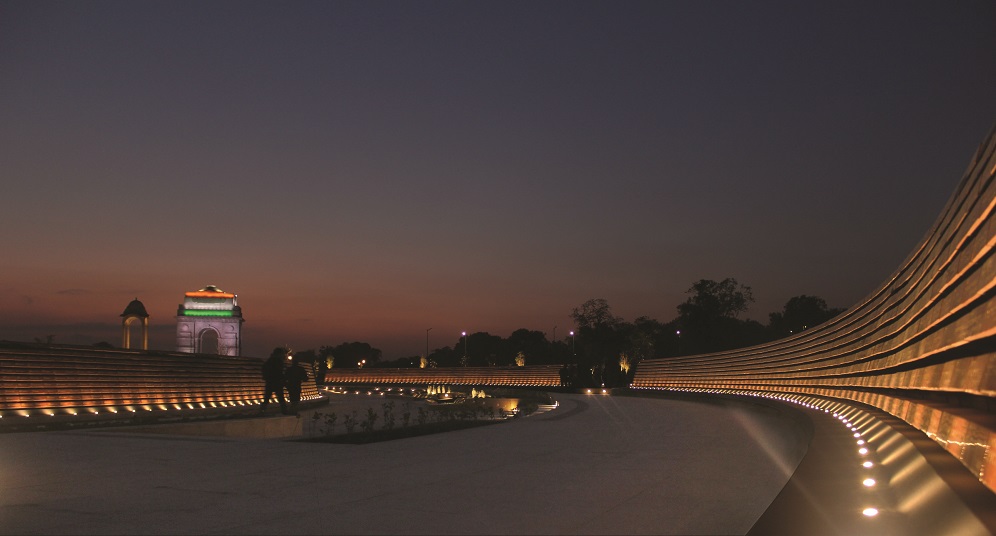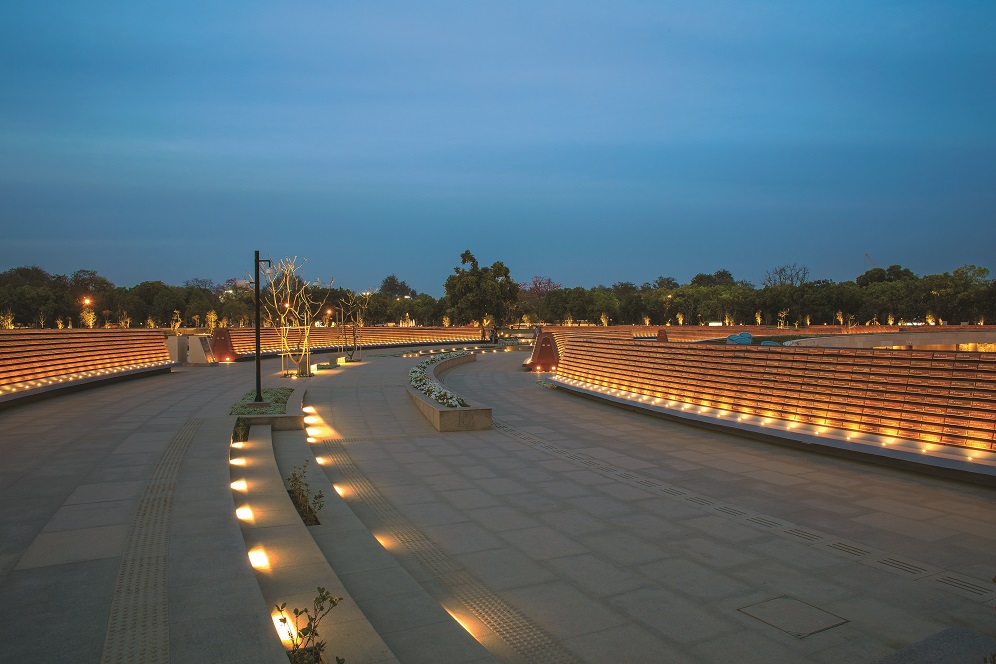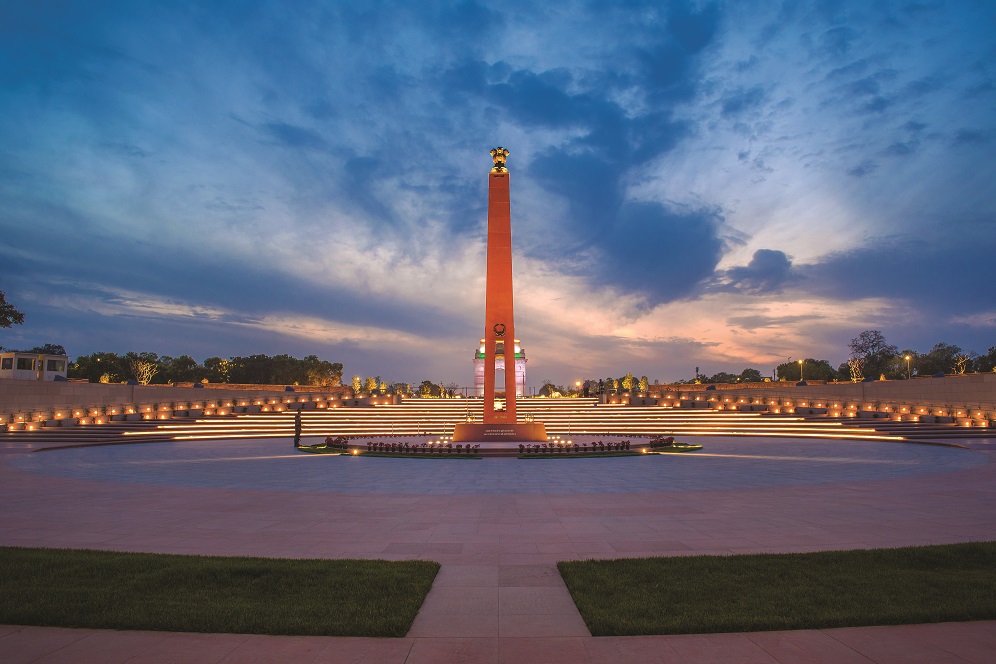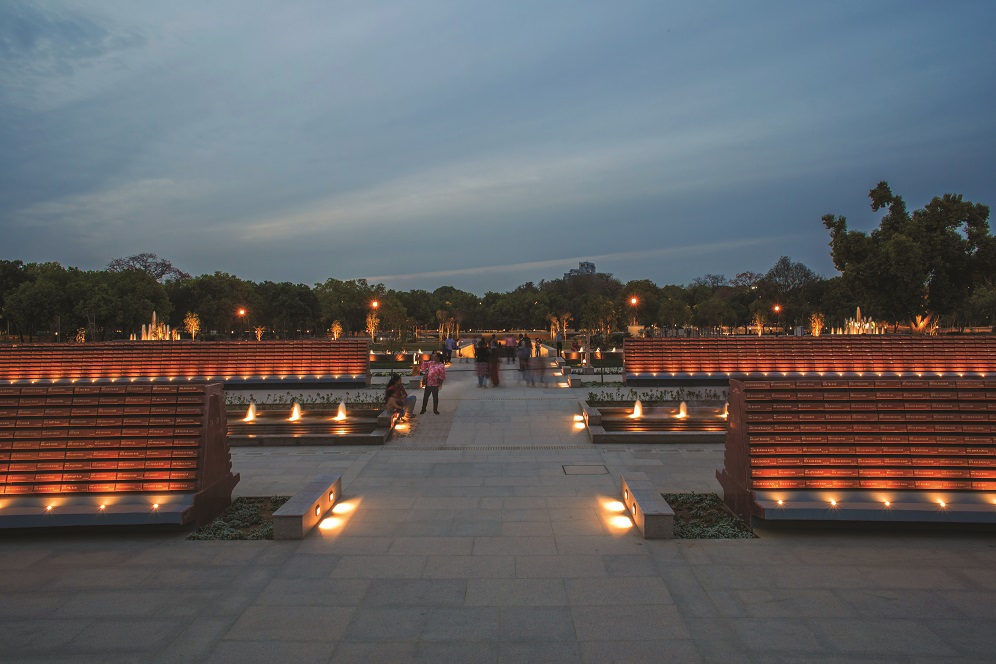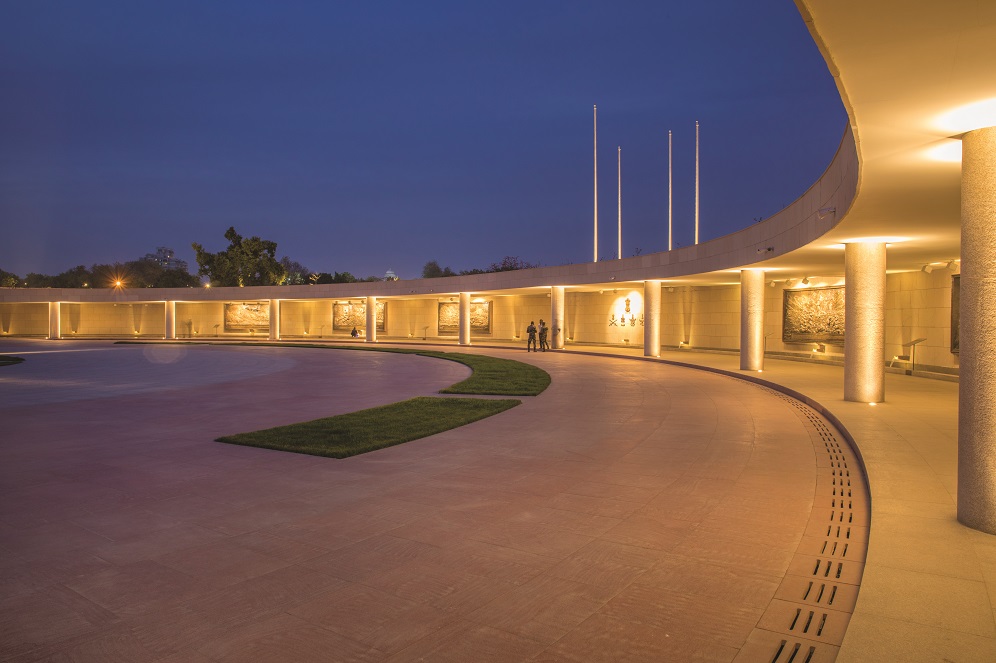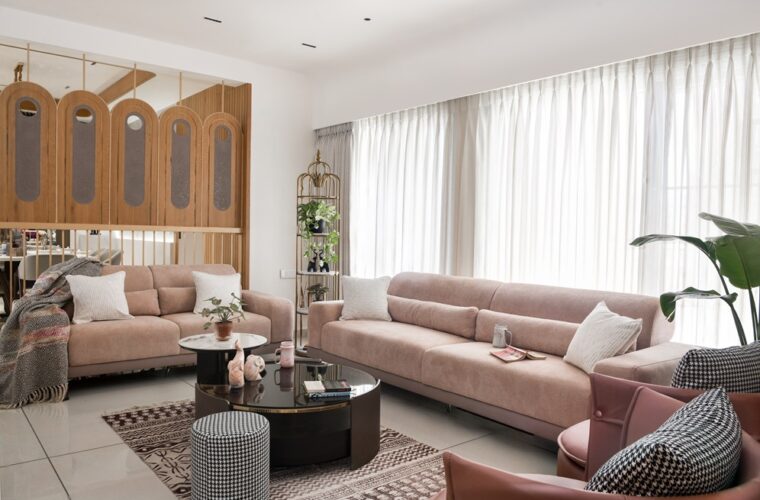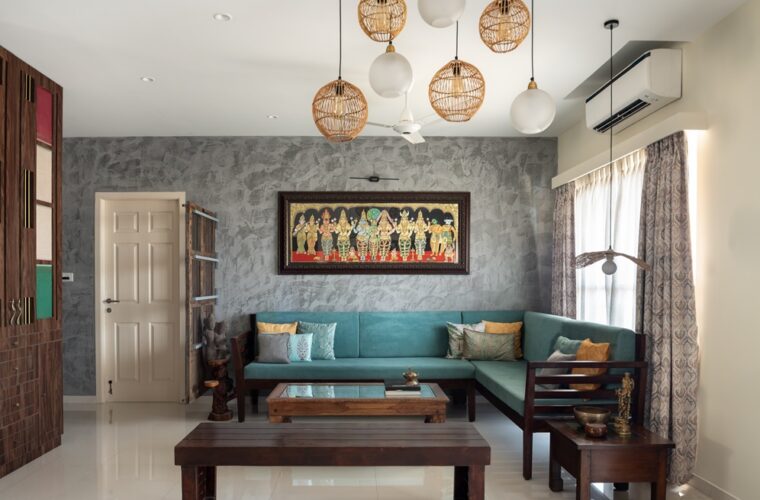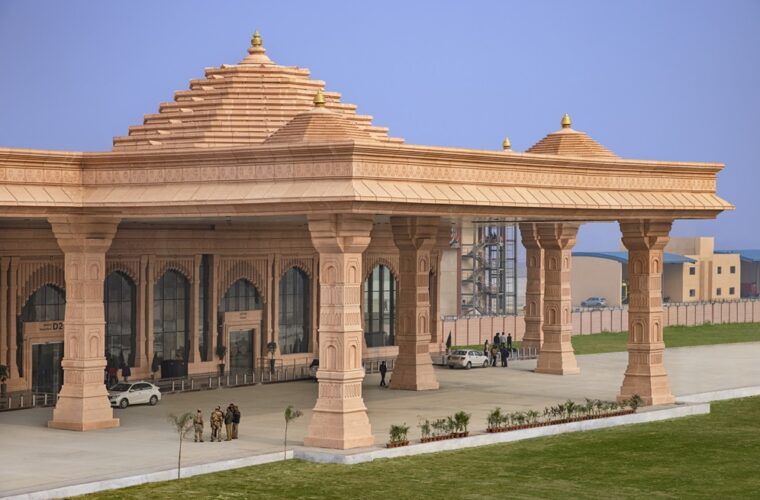IFJ Lighting: National War Museum, AWA Lighting Designers
Lighting designers : AWA Lighting Designers, New York | Mumbai
Lead designers:
Ar. Abhay Wadhwa, Principal/CEO
Anurie Shah: Associate Director, Mumbai
Justin Moench: Director, New York
Situated in the heart of New Delhi, this monument honors soldiers who laid down their lives for the country. The architectural design respects the sanctity of the Central Vista as national assets and provides unhindered access to the public. Concentric circular spaces, or “chakras” have different symbolic and functional meanings, and the layered lighting design approach reinforces this. The outermost “Rakshak” chakra (Protector) provides an outer even glow of the circle of light acting as a protective element for the entire memorial. The second chakra, “Yudhpath” (Warrior) has dots of light, with the number of dots representing the number of warriors who have given their lives to the country. The third chakra, “Tyag” (Sacrifice) symbolizes the sacrifice the warrior made for the nation. LED uplight fixtures highlight the names of these brave warriors. The descent of the warrior statue into the “dharti” (earth) is highlighted by recessed ground uplights. The fourth chakra, “Veer” (Braveheart) has lights going up into the sky to symbolize the victory the warrior has achieved. The fifth chakra, “Punarjanm” (Rebirth) signifies the return of the warrior, with a streak of light ascending upwards to the heavens and the great cosmos above.
In a brief interview, Ar. Abhay Wadhwa talks to IFJ about this unique project.
- Why is this the project you have selected to share with us?
The National War Memorial is a very honorable project for us. The complete concept received from the architect intrigued us to work with the lighting in a symbolized manner. Our lighting design reinforces a sense of purity and sanctity. Every Chakra brought out the visitor’s emotions through light and the transformation of the space from day to night. The outcome made us realize we have achieved what was conceptualized. We worked on this project from concept through construction administration and made sure the fixtures chosen were absolutely specification approved.
- What about it makes it stand out for you or makes it special for you?
The project was built over a short span but with a concept that was tied in flawlessly. What made it special for us was that we had the fixture-specific design integrated at the concept level which was then driven to completion. The design empowered the space and the transformation from day to night helped us see the design more vividly with the correct choice of fixtures. Our goal was to make the space a harmonious visual environment and to create evocative and emotional moments through light in time and space.
- What feeling does it evoke?
This project evokes a sense of pride. The design of this project was very empowering, and it had a sense of place in the public realm. Creating a harmonious and peaceful visual environment was our key goal. For AWA the reason we could achieve a foolproof lighting design was the space was for the masses but provided for an individual to feel a sense of calmness when they walked in from the hustle and bustle of their city. The procession of the chakras coming together in an ode to the soldiers and how it led to one form in the middle: the light going upwards to the souls of the warriors.
- What are the particular technologies or unique products used on this project?
For a project of such stature and space where the climatic conditions also had to be considered we had to take robust fixtures with optics and distributions that worked throughout the year. Because this was a public space we had to ensure that the light levels were just right. For every chakra, we had specific fixtures chosen. The fixtures used were maintenance-friendly, optics driven, and with an appropriate color temperature. We used linearity in some areas but the optic and the fixtures were correctly chosen and placed to give a smooth transition of the space.
- How has the project come together and how has the lighting design made it special?
We follow compositional logic, not conditional logic. Starting with a visual hierarchy analysis that is human-centric while responding to materiality. We provide an analysis of local craftsmanship and utilize the best skill sets for the project. By creating a parametric design approach, we were able to simplify the procurement and installation process. Finally, by contextualizing the lighting design solution to the local culture and history of the project it became a resource for transformation.


